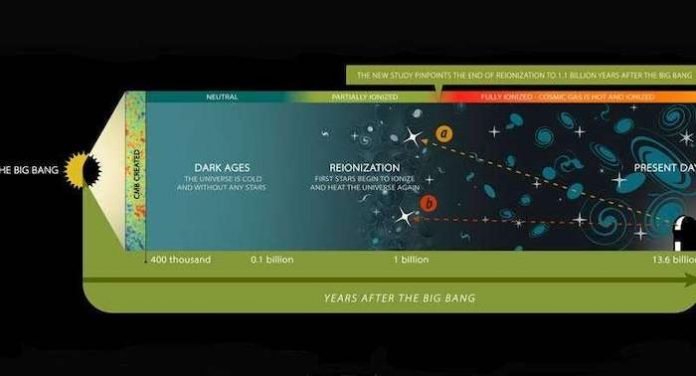
In a new study, researchers found that the large difference the ‘fogginess’ of the early universe were caused by islands of cold gas.
The cold gas was left behind when the universe heated up after the big bang.
The new finding helps scientists understand the history of the early universe better, for example, when the universe emerged from a cold and dark state to become what it is today.
The research was conducted by an international team of astronomers.
Previous research has shown that hydrogen gas dims the light from distant galaxies. The specific dimming pattern is called the Lyman-alpha Forest.
However, it was unknown why the fogginess of the universe varies strongly from one part of the universe.
In the current study, the team observed this dimming in a special type of bright galaxies called quasars.
They predicted that the light from quasars to vary from place to place at most by a factor of two at this time.
They performed state-of-the-art computer simulations on supercomputers and found that the light varies by a factor of about 500.
The researchers suggest that these variations may result from large regions full of cold hydrogen gas in the universe when it was just one billion years old.
The finding helps researchers pinpoint when reionization ended. They suggest that the reionization occurred 1.1 billion years after the big bang (or 12.7 billion years ago).
The universe was reionized by light from young stars in the first galaxies to form.
Future experiments will detect neutral hydrogen from the early universe.
The lead author of the study is Girish Kulkarni, who completed the research while a postdoctoral researcher at the University of Cambridge.
The study is published in the Monthly Notices of the Royal Astronomical Society.
Copyright © 2019 Knowridge Science Report. All rights reserved.



